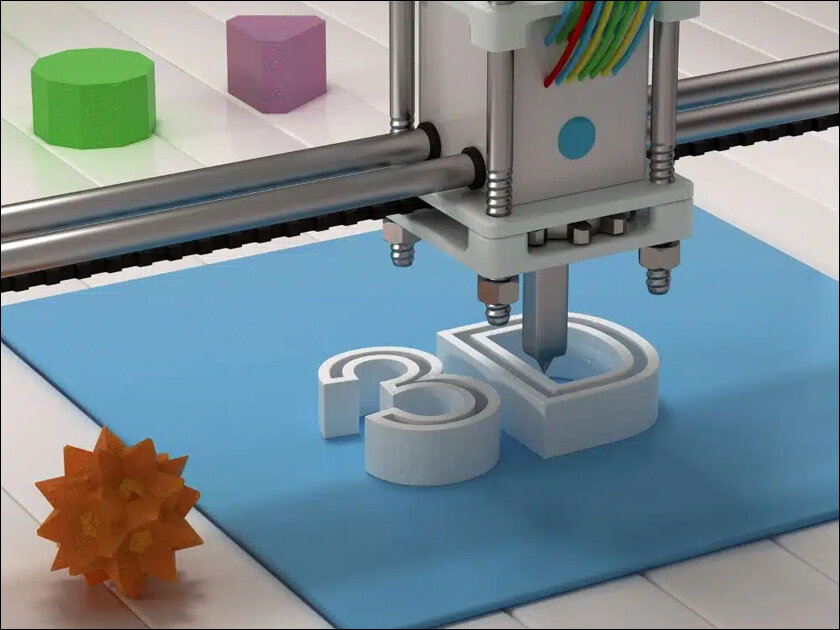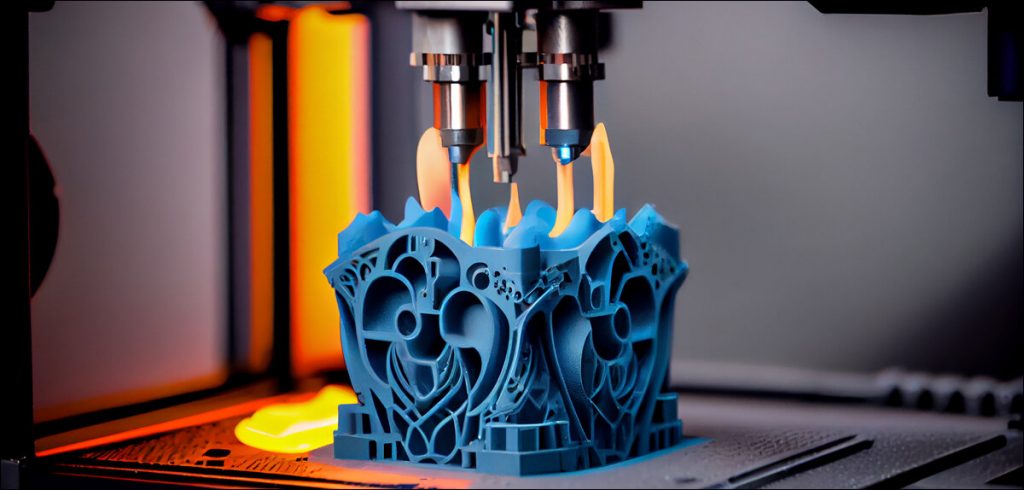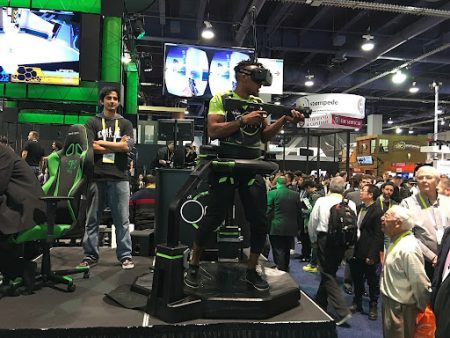Complete homes can be printed on-site, although minor parts and furnishings can be produced in factories – says Dinesh.
Construction materials have mostly been limited to a variety of mass-produced parts since the industrial revolution. It is unusual for new materials to appear in architecture. For many years, the majority of buildings on the Earth were made of wood, brick, and concrete.
The steel frame was adopted in the 1880s, and it completely altered architecture. Steel gave architects the freedom to create structures with more windows and higher ceilings, resulting in the skyscrapers that now characterise metropolitan skylines.
This standardised set of components, which includes anything from plywood panels to steel beams, has influenced building design and construction for more than 150 years.

With the advancements in “large-scale additive manufacturing,” that may not be the case for long. There hasn’t been a development with as much potential to alter the design and construction of buildings since the introduction of the steel frame.
Similar to desktop 3D printing, large-scale additive manufacturing creates products one layer at a time. The print material-be it clay, concrete, or plastic-is extruded in a liquid condition before solidifying into its desired shape.
Even if there are still certain obstacles preventing this technology from being widely used, I imagine a day when structures are made completely of locally produced or recycled materials, with shapes that are modelled after natural geometry.

Promising Prototypes:
One of them is the Trillium Pavilion, an outdoor building made of recycled ABS plastic, which is a typical material used in many consumer goods. The structure’s eponymous flower’s petals served as inspiration for its slender, double-curved surfaces.
Students created the project design, Loci Robotics printed it, and it was built at Cherokee Farm in Knoxville on the University of Tennessee Research Park.

Additional contemporary instances of extensive additive manufacturing encompass Tecla, a prototype home measuring 450 square feet (41.8 square metres) and created by Mario Cucinella Architects. It was manufactured in the Italian town of Massa Lombarda.
The clay used by the builders to print Tecla came from a nearby river. This low-cost material’s special combination with radial geometry produced an alternate dwelling type that uses less energy.
Returning to the United States, the design firm Lake Flato collaborated with the building technology company ICON to print the external walls of a house in Austin, Texas, known as “House Zero.”
The 2,000 square foot (185.8 square metre) house showcases the effectiveness and speed of 3D-printed concrete, and the structure’s exposed timber frame and curved walls provide a visually appealing contrast.
The Planning Process
Digital design, digital fabrication, and material science are the three knowledge domains that are involved in large-scale additive manufacturing.
First, computer models of every component that will be printed are made by architects. Then, by testing the components’ responses to structural stresses using software, these designers may make necessary adjustments to the components.
These technologies can also assist the designer in determining how to lighten the weight of components and automate specific design procedures, including pre-printing geometric intersection smoothing.

3D printing in architecture has to discover its niche if it is to be used more frequently. The computer model is subsequently converted into a set of instructions for the 3D printer by a piece of software called a slicer. You might imagine that 3D printers operate on a tiny scale-consider toothbrush holders and phone covers, for example. However, significant progress in 3D printing technology has made it possible for the hardware to scale up.
Occasionally, a device known as a “gantry-based system”-a rectangular structure with sliding rails resembling a desktop 3D printer-is used for printing. Robotic arms are being employed more often since they can print in any direction.
The printing location may also change. Complete homes must be printed on-site, although minor parts and furnishings can be produced in factories.
Large-scale additive manufacturing may be accomplished using a variety of materials. Because of its familiarity and durability, concrete is a popular option. Since clay can be gathered on-site, as the Tecla designers did, it is an interesting substitute.

However, polymers and plastics could offer the widest range of uses. Because of their extreme versatility, these materials may be designed to satisfy a wide range of unique structural and aesthetic needs. Additionally, organic and recyclable materials can be used to make them.
Inspiration from Nature
Additive manufacturing is a significantly more efficient constructing approach than “subtractive methods,” which entail cutting away extra material. For example, consider milling a wood beam out of a tree. Instead, additive manufacturing builds layer by layer utilising just the material and energy necessary to manufacture a given component.
Because 3D printing eliminates the need for extra formwork or moulds, even ordinary materials like concrete and plastics benefit from the process.

Nowadays, assembly lines built to create identical components are used to mass-produce the majority of building materials. Although this method lowers costs, it offers limited opportunity for customization.
Large-scale additive manufacturing eliminates the need for forms, dyes, or tooling, allowing for the unique creation of each item without sacrificing time for further complexity or customization.
3D printing in architecture has to discover its niche if it is to be used more frequently. The capacity to create intricate components with interior gaps is another fascinating aspect of large-scale additive manufacturing. This might eventually make it possible to print walls with ducting or conduit already installed.
Furthermore, studies are being conducted to investigate the potential of multi-material 3D printing, a method which would enable the complete integration of windows, insulation, structural reinforcement, and even wiring into one printed part.

The way that layer-by-layer construction using a material that hardens gradually mimics natural processes, such as shell development, is one of the features of additive manufacturing that most interests me. This creates opportunities for designers to use geometries that are widespread in nature but challenging to create with conventional construction techniques.
Lightweight lattices of tubes with different widths reflecting the stresses acting upon them might be created by structural frames modelled after the intricate structure of bird bones. It is possible to create facades that mimic the forms of plant leaves in order to both shade the structure and generate solar electricity.
Overcoming the Learning Curve
Large-scale additive manufacturing has numerous benefits, but there are a lot of barriers preventing it from being widely used. The most challenging aspect would be its novelty. Traditional building materials like steel, concrete, and wood have given rise to a full infrastructure, including building codes and supply systems.

Additionally, the price of digital fabrication equipment is quite exorbitant, and the particular design abilities required to work with these novel materials are not yet taught in many schools. 3D printing in architecture has to discover its niche if it is to be used more frequently.
I believe it will take a specialised use of large-scale additive manufacturing to make it widely used, just like word processing did to popularise desktop computers.
It could be its capacity to produce structural frames with exceptional efficiency. Additionally, I can clearly see its potential for producing distinctive sculpture façades that can be recycled and replicated when their useful lives are coming to an end.
In any case, it is likely that a number of variables will work together to guarantee that some portion of future structures will be 3D printed.
In case you missed:
- A Comprehensive Guide to Understanding Hyperscaler Technology
- Ensuring EV Safety: The Role of Battery Certification and India’s New Regulations
- What is Data Sovereignty?
- Cloud Banking
- Cloud Banking with Public, Private, Hybrid clouds and more
- Hybrid Revolution: Navigating India’s Path to Greener Mobility
- Sonic the Hedgehog – The Ultra-Fast forward
- Why Choose a Smart Ring over a Fitness Tracker and What Do They Mean?
- 10 Well-Known Social Media Sites That Were Closed, From Omegle to Orkut
- Unlocking Convenience: Google Maps’ Glanceable Directions Revolutionizes Navigation









